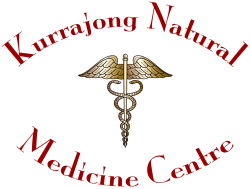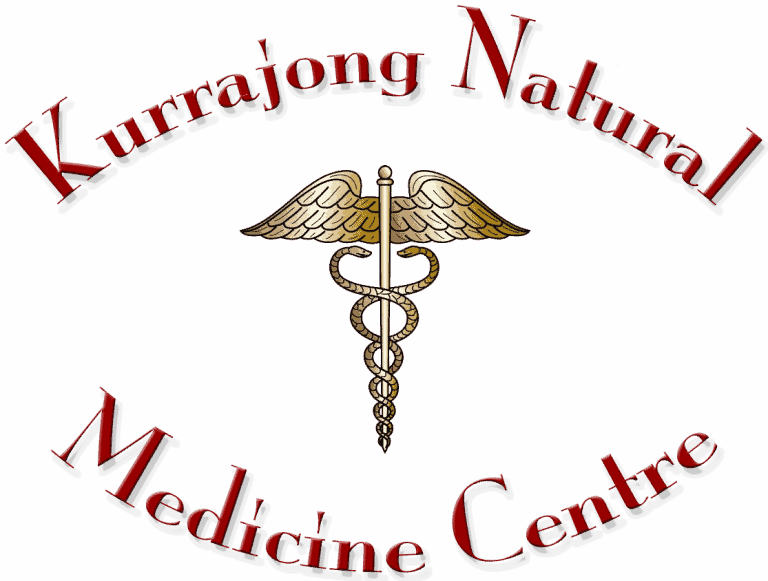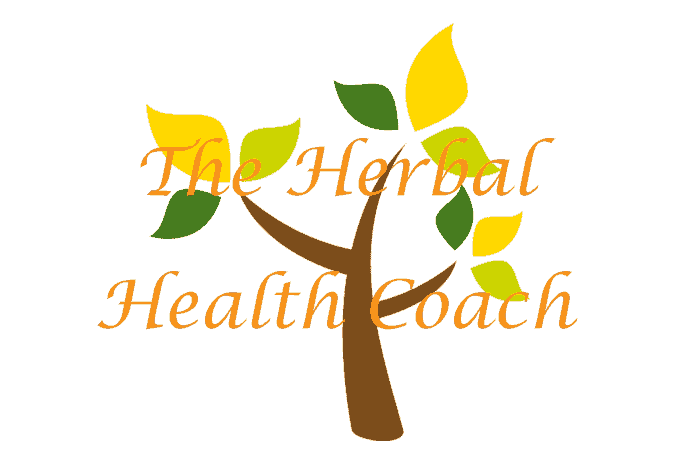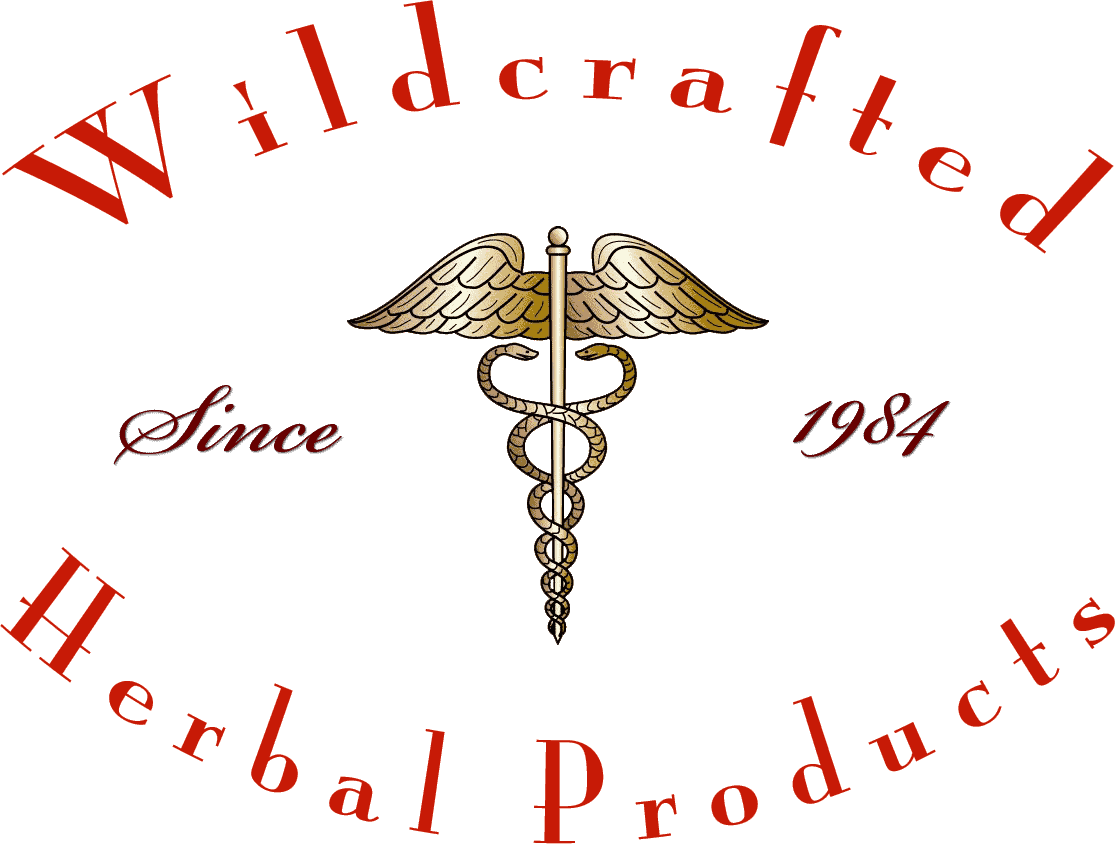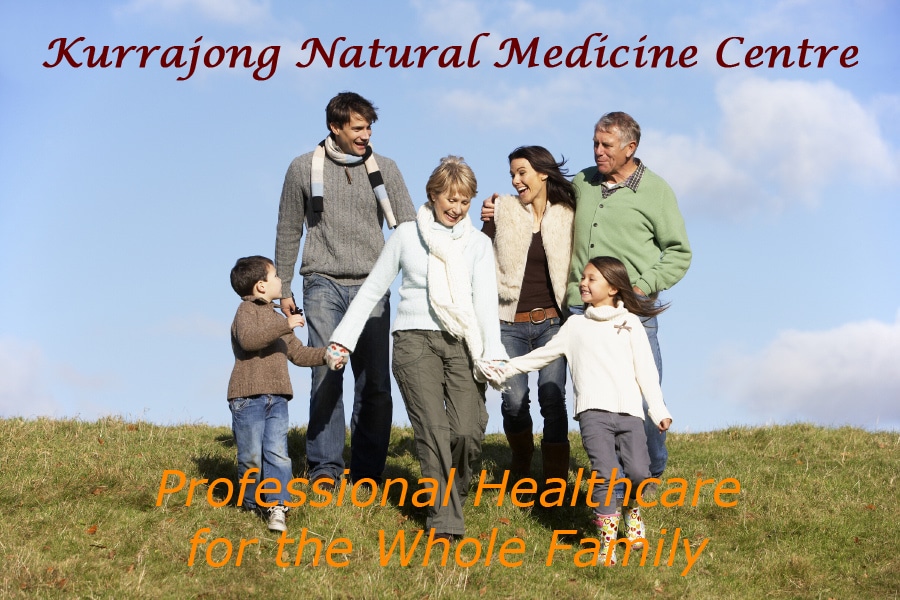The Health & Wellness Magazine - Summer 2023/24 Issue
Content of this issue of The Health and Wellness Magazine - Summer 2023/24
What's On & News
Well it is that time of year again, so we want to take this opportunity to wish all of you a very Merry Christmas and an awesome, happy and healthy 2024.
Our Clinic will be closed from the 24th of Dec. to the 9th of Jan. inclusive. Please let us know if you need extra herbs to tied you over this period well before the 24th as ordering herbs gets increasingly more difficult as we approach Christmas.
Acupuncture, Acupuncturists, and the Wisdom of Chinese Medicine
Acupuncture, an integral component of Traditional Chinese Medicine (TCM), has gained worldwide recognition and acceptance for its therapeutic benefits. This ancient practice, dating back over 2,500 years, involves the insertion of fine needles into specific points on the body to stimulate various physiological responses. This comprehensive exploration delves into the history, principles, techniques, and contemporary relevance of acupuncture, as well as the role of acupuncturists in facilitating holistic healthcare through the lens of Chinese medicine.
I. The History of Acupuncture
Acupuncture’s roots can be traced to ancient China, where it was developed over centuries of observation, experimentation, and refinement. The earliest known records of acupuncture date back to the Huangdi Neijing (Yellow Emperor’s Inner Canon), a foundational text in TCM, believed to have been written around 200 BCE. This document laid the theoretical groundwork for acupuncture, emphasizing the balance of vital energy, or Qi, in the body and the interconnectedness of various bodily systems.
Acupuncture’s development continued through different dynasties, with various scholars and practitioners contributing to its evolution. It gradually spread beyond China’s borders, influencing other East Asian medical traditions like Japanese acupuncture and Korean Saam acupuncture.
II. Principles of Chinese Medicine
To understand acupuncture fully, one must grasp the principles of Chinese medicine. TCM views the body as a holistic system, where the flow of Qi, the balance of Yin and Yang, and the harmony of the body’s five elements (Wood, Fire, Earth, Metal, and Water) are central concepts.
Qi (Vital Energy): Qi flows through meridians or channels in the body, and disruptions in this flow are believed to cause illness. Acupuncture aims to restore the smooth flow of Qi, promoting health and wellbeing.
Yin and Yang: Yin and Yang represent opposing but complementary forces in the body. Balance between these forces is essential for optimal health. Acupuncture seeks to restore Yin-Yang balance when it’s disrupted.
Five Elements: TCM associates each element with specific organs and body functions. Acupuncture points are chosen based on these associations to treat imbalances related to a particular element.
III. The Art of Acupuncture
Acupuncture involves the precise insertion of thin needles into specific points on the body. These points are strategically chosen based on the patient’s condition and TCM diagnosis. The process is virtually painless, as the needles are much finer than those used for injections.
Needle Insertion: Acupuncturists insert needles to varying depths, depending on the location and desired effect. Deeper insertion may be used for chronic conditions, while shallow insertion is common for more superficial issues.
Stimulation Techniques: After insertion, acupuncturists may use various techniques to stimulate the needles, such as manual manipulation, heat (moxibustion), or electrical stimulation. These methods enhance the therapeutic effect of acupuncture.
Duration and Frequency: Treatment duration and frequency vary depending on the condition being addressed. Some acute conditions may require only one session, while chronic conditions may necessitate a series of treatments.
IV. The Therapeutic Efficacy of Acupuncture
Over the years, acupuncture has gained recognition for its therapeutic benefits, often as a complementary or alternative therapy alongside conventional medicine. Research has shown that acupuncture can be effective in managing a wide range of conditions, including:
Pain Management: Acupuncture is renowned for its ability to alleviate pain, making it a valuable option for individuals with chronic pain conditions like back pain, arthritis, and migraines.
Stress Reduction: Acupuncture’s ability to promote relaxation and reduce stress has led to its use in treating anxiety, depression, and insomnia.
Fertility and Reproductive Health: Acupuncture has shown promise in improving fertility, reducing the side effects of infertility treatments, and supporting a healthy pregnancy.
Digestive Disorders: Patients with gastrointestinal issues, such as irritable bowel syndrome (IBS) and nausea, have reported relief through acupuncture.
Respiratory Health: Asthma and allergies are among the respiratory conditions that may benefit from acupuncture by helping to reduce symptoms and improve lung function.
Addiction and Substance Abuse: Some individuals have found acupuncture to be a valuable component of addiction recovery programs, assisting with cravings and withdrawal symptoms.
V. Acupuncturists: The Practitioners of Healing
Acupuncturists are skilled healthcare professionals who specialize in acupuncture and TCM. They undergo rigorous training and education to become proficient in this ancient healing art. The journey to becoming an acupuncturist typically includes the following steps:
Education: Acupuncturists usually complete a Bachelor’s degree in acupuncture, traditional Chinese medicine, or a related field. They then pursue a Master’s or Doctoral degree in Acupuncture and Oriental Medicine (DAOM).
Licensing and Certification: Acupuncturists must obtain a license to practice in their respective states or countries. This typically involves passing national board exams.
Clinical Training: Extensive clinical training is a crucial part of an acupuncturist’s education. It provides hands-on experience in diagnosing patients and administering treatments.
Continuing Education: Acupuncturists are required to engage in ongoing professional development to stay current with the latest research and techniques in the field.
VI. Integration with Modern Healthcare
In recent years, acupuncture has seen increased integration into mainstream healthcare systems. This integration has been facilitated by a growing body of scientific research supporting its efficacy and safety. Acupuncturists now collaborate with conventional medical practitioners to provide comprehensive care for patients.
Pain Management Clinics: Acupuncture is frequently offered as part of pain management programs in hospitals and clinics, offering a drug-free alternative for pain relief.
Cancer Care: Acupuncture is used in cancer centers to help manage the side effects of chemotherapy and radiation therapy, such as nausea, fatigue, and pain.
Hospitals: Some hospitals have integrated acupuncture services into their treatment options, recognizing its value in promoting patient comfort and healing.
Veterinary Acupuncture: Acupuncture is not limited to human medicine; it is also used in veterinary care to treat animals with various conditions.
VII. Challenges and Controversies
Despite its increasing acceptance, acupuncture still faces some challenges and controversies:
Scientific Skepticism: Some scientists and medical professionals remain skeptical about acupuncture’s mechanisms of action and its efficacy, leading to ongoing debates.
Regulation: The regulation of acupuncture varies widely by region. Ensuring consistent standards of care and safety can be a challenge.
Cost and Accessibility: Acupuncture may not be covered by insurance, making it less accessible to some individuals. This cost barrier can be a significant hindrance to its widespread adoption.
VIII. The Future of Acupuncture
As acupuncture continues to evolve and integrate into modern healthcare, its future looks promising. Researchers are exploring new applications and refining techniques. Additionally, the integration of acupuncture into telemedicine and digital health platforms is expanding its accessibility.
Conclusion
Acupuncture, deeply rooted in the wisdom of Chinese medicine, has come a long way from its ancient origins. It has transcended cultural boundaries to become a respected and sought-after form of therapy worldwide. Acupuncturists, as the stewards of this ancient art, play a pivotal role in providing holistic healthcare and collaborating with conventional medicine to improve patient outcomes. As scientific understanding grows and acceptance widens, acupuncture is poised to continue making significant contributions to the field of healthcare in the years to come.
Introduction to Aromatherapy
by Author(s)
Aromatherapy is a holistic healing practice that utilizes the aromatic compounds found in essential oils to promote physical, mental, and emotional well-being. It is a form of alternative medicine that has been used for centuries in various cultures around the world. The term “aromatherapy” was coined in the early 20th century by French chemist René-Maurice Gattefossé, who accidentally discovered the healing properties of lavender oil when he applied it to a burn on his hand.
Essential oils are concentrated liquids extracted from various parts of plants, such as leaves, flowers, stems, bark, and roots. These oils contain the natural fragrance and beneficial properties of the plants they are derived from. Aromatherapists believe that inhaling the aroma of these essential oils or applying them to the skin can have therapeutic effects on the body, mind, and emotions.
Aromatherapy is often used as a complementary therapy alongside conventional medical treatments, and it’s important to note that it should not be used as a substitute for medical advice or treatment. Its potential benefits include:
Stress Reduction and Relaxation: Certain essential oils, such as lavender, chamomile, and bergamot, are known for their calming and relaxing effects. Inhaling these aromas or using them in massages can help reduce stress and anxiety.
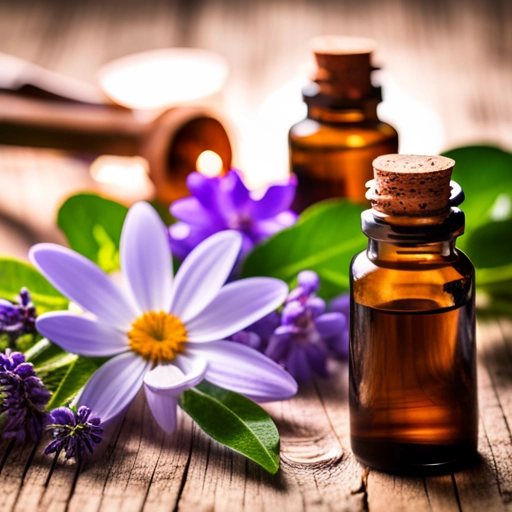
Pain Management: Some essential oils, like eucalyptus and peppermint, have analgesic properties that may help alleviate minor aches and pains when applied topically or used in a diffuser.
Improved Sleep: Lavender and cedarwood oils, among others, are often used to create a soothing environment that can promote better sleep quality.
Enhanced Mood: Citrus oils like orange and lemon are believed to have uplifting effects on mood and can be used to combat feelings of sadness or low energy.
Skin Care: Essential oils such as tea tree, rosehip, and chamomile are incorporated into skincare products for their potential benefits in treating various skin conditions.
Respiratory Support: Eucalyptus and tea tree oils are commonly used to help clear congestion and support respiratory health when diffused or used in steam inhalation.
Immune System Support: Some essential oils have antimicrobial properties that are believed to aid the immune system in fighting off infections.
Aromatherapy can be administered through several methods, including:
Diffusion: Essential oils are diffused into the air using devices such as diffusers, allowing their aroma to fill the room.
Massage: Diluted essential oils are applied to the skin during massage therapy, combining the benefits of touch and aromatherapy.
Inhalation: Inhaling the scent of essential oils directly from a bottle, using a handkerchief, or adding a few drops to a bowl of hot water for steam inhalation.
Bathing: Adding a few drops of essential oils to a warm bath can create a relaxing and aromatic bathing experience.
Compresses: Essential oils are added to warm or cold water and used to create compresses for targeted relief on specific body areas.
It’s important to approach aromatherapy with caution and respect for individual sensitivities. Essential oils are potent substances and can cause adverse reactions if used improperly. Before using aromatherapy, consider consulting a qualified aromatherapist or healthcare professional, especially if you have any underlying health conditions, allergies, or are pregnant.
Or you can make an appointment with Susan Siegenthaler, who is a qualified medical Aromatherapist and Herbalist
The Art and Science of Natural Skincare: A Comprehensive Guide
by Author(s)
The pursuit of healthy, radiant skin has been a timeless endeavor. While the beauty industry offers a multitude of products promising flawless complexions, many individuals are turning to a more holistic approach – natural skincare. Natural skincare is a regimen that utilizes ingredients sourced directly from nature, such as plants, herbs, and essential oils, to promote skin health. In this essay, we will delve into the art and science of natural skincare, exploring its principles, benefits, and the steps to establish an effective natural skincare routine.
The Principles of Natural Skincare
Understanding Your Skin: The first principle of natural skincare is understanding your unique skin type. This knowledge is crucial as it guides you in selecting the right ingredients and products that will best suit your skin’s needs. Common skin types include oily, dry, combination, sensitive, and normal.
Ingredient Selection: Natural skincare emphasizes the use of ingredients that are free from synthetic chemicals, preservatives, and artificial fragrances. Key ingredients include plant extracts, essential oils, vitamins, minerals, and antioxidants.
Gentle Cleansing: Natural skincare routines typically start with gentle cleansing. Natural cleansers are formulated to remove dirt, makeup, and impurities without stripping the skin of its natural oils.
Exfoliation: Exfoliation is a vital step in any skincare routine. Natural exfoliants, such as sugar, coffee grounds, or fruit enzymes, help remove dead skin cells, allowing new skin to surface. This promotes a brighter complexion and can improve the absorption of other skincare products.
Moisturizing: Hydration is key to healthy skin. Natural moisturizers, often based on ingredients like shea butter, aloe vera, or jojoba oil, help lock in moisture, keeping the skin supple and reducing the appearance of fine lines.
Sun Protection: Sunscreen is a non-negotiable in natural skincare. While zinc oxide and titanium dioxide are popular natural sunscreen ingredients, they offer broad-spectrum protection against harmful UV rays.
Balanced Diet and Hydration: Natural skincare isn’t just about topical treatments; it also involves maintaining a balanced diet and staying hydrated. Nutrient-rich foods and adequate water intake contribute to healthy, glowing skin from the inside out.
The Science Behind Natural Skincare
Natural skincare is not just about choosing ingredients from your garden; it also involves a deep understanding of the science of skincare. Here are some key scientific principles behind the efficacy of natural skincare:
Antioxidants: Many natural ingredients are rich in antioxidants, which help combat free radicals. Free radicals are unstable molecules that damage skin cells and accelerate the aging process. Antioxidants, such as vitamin C and E, neutralize these free radicals, promoting healthier skin.
Anti-Inflammatory Properties: Natural ingredients like chamomile and aloe vera have well-documented anti-inflammatory properties. Inflammation is a leading cause of skin issues, including redness and acne. By reducing inflammation, these natural ingredients help maintain clear, calm skin.
Collagen Production: Collagen is a protein that gives skin its elasticity and youthful appearance. Ingredients like vitamin A (retinol) and peptides found in natural skincare products can stimulate collagen production, reducing the appearance of wrinkles and fine lines.
Skin Barrier Protection: Natural oils, such as argan and rosehip oil, are rich in fatty acids that help strengthen the skin’s natural barrier. A healthy skin barrier locks in moisture, protects against environmental pollutants, and prevents moisture loss.
Benefits of Natural Skincare
Reduced Exposure to Harmful Chemicals: Natural skincare products are free from many synthetic chemicals, which can cause skin irritation and long-term health concerns. Using natural products reduces your exposure to these potential hazards.
Gentle on the Skin: Natural ingredients are often gentler and less likely to cause irritation, making them suitable for those with sensitive skin.
Environmental Sustainability: Natural skincare often aligns with eco-friendly practices, using sustainable farming methods and biodegradable packaging. This reduces the environmental impact of your skincare routine.
Customization: With a wide range of natural ingredients available, you can customize your skincare routine to address your specific skin concerns.
Holistic Approach: Natural skincare encourages a holistic approach to beauty by promoting overall wellness through the use of natural, nourishing ingredients and a balanced lifestyle.
Establishing an Effective Natural Skincare Routine
Building an effective natural skincare routine involves several steps:
Know Your Skin Type: Determine your skin type (oily, dry, combination, etc.) to select products tailored to your needs.
Cleansing: Start with a gentle natural cleanser to remove impurities without over-drying.
Exfoliation: Exfoliate 1-3 times a week using a natural exfoliant suited to your skin type.
Toning: Use a natural toner to balance the skin’s pH levels and prepare it for other products.
Serums: Apply natural serums with active ingredients to target specific skin concerns.
Moisturize: Use a natural moisturizer to lock in moisture and protect the skin.
Sunscreen: Apply a natural sunscreen with SPF 30 or higher daily, even on cloudy days.
Diet and Hydration: Maintain a balanced diet and drink plenty of water to support overall skin health.
Consistency: Consistency is key. Stick to your routine and allow time for products to show results.
Conclusion
Natural skincare is more than a trend; it’s a holistic approach to beauty that emphasizes using ingredients derived from nature to promote healthy, radiant skin. By understanding your skin type, selecting the right ingredients, and following a customised routine, you can harness the science of natural skincare to achieve the clear, glowing complexion you desire. Additionally, the benefits of natural skincare extend beyond personal beauty, encompassing environmental sustainability and overall well-being. Embracing natural skincare is not just a choice for your skin; it’s a lifestyle choice that can lead to healthier, more sustainable living.
The Benefits of Yoga

Yoga is an ancient practice that originated in India and has gained tremendous popularity worldwide. It is a holistic discipline that combines physical postures, breathing exercises, meditation, and ethical principles to promote physical, mental, and spiritual well-being. The benefits of yoga are vast and wide-ranging, impacting various aspects of our lives. In this essay, we will explore the numerous advantages of practicing yoga, spanning physical health, mental well-being, and spiritual growth.
Physical Health Benefits of Yoga: Yoga offers numerous physical health benefits, making it a popular choice for people of all ages and fitness levels. Here are some of the key advantages:
Increased Flexibility: The practice of yoga involves various stretching and bending postures, which gradually increase flexibility and mobility. Regular practice helps to lengthen muscles, improve joint range of motion, and reduce the risk of injuries.
Improved Strength and Balance: Many yoga poses require engaging and stabilizing different muscle groups, leading to increased strength and improved balance. Strong muscles and enhanced balance contribute to better posture and overall physical stability.
Enhanced Cardiovascular Health: Certain dynamic forms of yoga, such as Vinyasa or Power Yoga, incorporate continuous movement and flowing sequences. These practices can provide cardiovascular benefits by increasing heart rate and improving circulation.
Better Respiratory Function: Yoga emphasizes deep and conscious breathing techniques. Practicing pranayama (breathing exercises) can strengthen the respiratory muscles, increase lung capacity, and promote healthier breathing patterns.
Increased Energy and Vitality: Regular yoga practice helps to stimulate the body’s energy systems, such as the nervous system and subtle energy channels (nadis). This leads to increased vitality, reduced fatigue, and an overall sense of rejuvenation.
Improved Digestion: Certain yoga postures, such as twists and forward bends, massage and stimulate the digestive organs, improving digestion and alleviating common digestive issues. Additionally, relaxation techniques in yoga can help reduce stress-related digestive problems.
Boosted Immune System: Yoga has been found to enhance immune function by reducing stress levels and promoting overall well-being. The combination of physical movement, breathing exercises, and relaxation positively influences the immune response.
Pain Management: Regular practice of yoga has been shown to alleviate chronic pain, including back pain, arthritis, and migraines. Gentle stretching, mindful movement, and relaxation techniques can help reduce pain and improve quality of life.
Mental Well-being Benefits of Yoga: Yoga is not only beneficial for physical health but also has a profound impact on mental well-being. Here are some of the mental benefits of practicing yoga:
Stress Reduction: One of the most well-known benefits of yoga is its ability to reduce stress. Through the combination of physical movement, breath control, and mindfulness, yoga helps to activate the relaxation response, lower stress hormones, and promote a sense of calm and tranquility.
Improved Mental Clarity and Focus: Yoga practices, including asanas (postures) and meditation, help to quiet the mind, improve concentration, and enhance mental clarity. Regular practice can improve cognitive function, memory, and overall mental performance.
Anxiety and Depression Management: Yoga has been shown to be effective in reducing symptoms of anxiety and depression. The combination of physical activity, breath awareness, and meditation helps regulate emotions, promote positive thinking, and create a sense of emotional balance.
Enhanced Sleep Quality: Insomnia and poor sleep quality are common problems in today’s fast-paced world. Yoga offers techniques and practices that promote relaxation, reduce anxiety, and prepare the body and mind for restful sleep.
Increased Self-Awareness: Yoga encourages self-reflection and introspection, fostering a deeper understanding of oneself. Through regular practice, individuals develop greater self-awareness, self-acceptance, and self-confidence, leading to personal growth and improved relationships.
Stress and Emotional Resilience: Regular yoga practice builds resilience and equips individuals with effective tools to cope with stress and manage emotions. The mindfulness cultivated in yoga helps individuals develop a non-reactive and balanced approach to challenges and life’s ups and downs.
Spiritual Benefits of Yoga: Yoga is deeply rooted in spirituality and offers a path for self-discovery and connection to something greater than oneself. The spiritual benefits of yoga include:
Inner Peace and Harmony: Yoga philosophy emphasizes the union of body, mind, and spirit. Through the practice of yoga, individuals can cultivate a sense of inner peace, harmony, and connection to their true nature.
Expanded Consciousness: Yoga practices, such as meditation and pranayama, facilitate the expansion of consciousness and the awakening of higher states of awareness. This can lead to a deeper understanding of oneself and the interconnectedness of all beings.
Cultivation of Mindfulness: Mindfulness is an essential aspect of yoga. By bringing attention to the present moment and observing thoughts, emotions, and sensations without judgment, individuals can develop a deep sense of presence and connection to the present moment.
Connection to the Divine: For many practitioners, yoga is a spiritual practice that fosters a deeper connection to the divine or the higher self. Yoga offers a framework for exploring one’s spirituality, regardless of religious affiliation.
Cultivation of Virtues: The ethical principles of yoga, known as the Yamas and Niyamas, guide practitioners toward virtuous and ethical living. These principles include non-violence, truthfulness, contentment, self-discipline, and self-study, fostering personal growth and spiritual development.
So, the benefits of practicing yoga are diverse and far-reaching. Whether it’s improving physical health, enhancing mental well-being, or fostering spiritual growth, yoga offers a comprehensive approach to overall well-being. By integrating physical postures, breathing exercises, meditation, and ethical principles, yoga provides a holistic framework that can be adapted to suit the needs of individuals from all walks of life. Incorporating yoga into one’s lifestyle can lead to a healthier, more balanced, and fulfilling life.
The Physiological Effects of High Daytime Temperatures on the Human Body
High daytime temperatures can have significant physiological effects on the human body, especially when the heat becomes excessive. The body has several mechanisms to regulate its internal temperature and cope with heat, but when these mechanisms are overwhelmed, it can lead to a range of health issues. Here’s a detailed look at the physiological effects of high daytime temperatures on the human body:
Dehydration: High temperatures cause increased sweating as the body attempts to cool itself down through evaporative cooling. Excessive sweating can lead to rapid fluid loss, resulting in dehydration. Dehydration can lead to symptoms such as dry mouth, fatigue, dizziness, and reduced urine output. In severe cases, it can even cause heat-related illnesses like heat exhaustion or heatstroke.
Heat Cramps: Loss of electrolytes through sweating can lead to muscle cramps. Heat cramps typically affect muscles that are actively engaged in physical activity and can be quite painful. Proper hydration and electrolyte replacement are essential to prevent and alleviate heat cramps.
Heat Exhaustion: When the body cannot cool itself effectively, it can lead to heat exhaustion. Symptoms may include profuse sweating, weakness, dizziness, nausea, and an elevated heart rate. Heat exhaustion is a serious condition and requires prompt treatment, including moving to a cooler environment, hydrating, and resting.
Heatstroke: This is a life-threatening condition that occurs when the body’s core temperature rises to dangerous levels (typically above 104°F or 40°C). High temperatures can overwhelm the body’s cooling mechanisms, such as sweating. Symptoms of heatstroke include a high body temperature, confusion, loss of consciousness, rapid breathing, and seizures. Heatstroke requires immediate medical attention as it can lead to organ damage and death if left untreated.
Cardiovascular Stress: High temperatures place additional stress on the cardiovascular system. The body redirects blood flow to the skin’s surface to aid in cooling, which can increase the heart rate and blood pressure. This can be especially problematic for individuals with pre-existing heart conditions.
Respiratory Issues: Hot and humid conditions can make it more difficult to breathe. High temperatures can exacerbate respiratory conditions such as asthma and COPD (Chronic Obstructive Pulmonary Disease). It can also increase the risk of heat-related respiratory illnesses.
Skin Problems: Prolonged exposure to high temperatures and UV radiation can lead to skin problems like sunburn, heat rash (prickly heat), and in extreme cases, heat-related skin blistering.
Kidney Strain: Dehydration due to excessive sweating can place stress on the kidneys. In some cases, this can lead to kidney stones or kidney damage.
Neurological Effects: High temperatures can affect the central nervous system, leading to symptoms like confusion, irritability, and impaired judgment. This can increase the risk of accidents and heat-related emergencies.
Weakened Immune System: Prolonged exposure to heat can weaken the immune system, making individuals more susceptible to illnesses.
To mitigate the physiological effects of high daytime temperatures, it’s crucial to take preventive measures, including staying hydrated, wearing appropriate clothing, seeking shade or air-conditioned environments, and avoiding strenuous activities during peak heat hours.
Vulnerable populations, such as the elderly, children, and individuals with certain medical conditions, are at higher risk and should take extra precautions in extreme heat conditions. Public health authorities often issue heat advisories and warnings during heatwaves to educate the public on how to protect themselves from the adverse effects of high temperatures.
Did You Know?
Did You Know?
Did you know there are only 4 words in the English language which end in 'dous' (they are: hazardous, horrendous, stupendous and tremendous
Did you know 'Bookkeeper' and 'bookkeeping' are the only 2 words in the English language with three consecutive double letters
Did you know only female mosquitoes bite
Did you know the word 'uncopyrightable' is the is the only 15 letter word that can be spelled without repeating any letter
Did you know the word typewriter is the longest word that can be typed using only the top row of a keyboard
Did you know Hawaii is the only US state that grows coffee
Did you know the word 'underground is the only word that begins and ends with the letters 'und'
Did You Know?
Did you know dreamt is the only word that ends in mt
Did you know honey is the only natural food which never spoils
Did you know the only continent with no active volcanoes is Australia
Did you know elephants are the only mammal that can't jump
Did you know hummingbirds are the only bird that can fly backwards
Did you know in a deck of cards the king of hearts is the only king without a moustache
Did you know the hyoid bone in your throat is the only bone in your body not attached to any other
We hope you enjoyed this Edition of The Health and Wellness Magazine. We are always open to constructive feedback and ideas for future articles. If you have a particular topic you would like us to cover relating to yoga, alternative medicine, meditation, etc., please let us know and we will include it in an up coming Magazine
Namaste.
